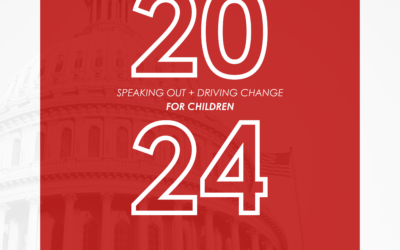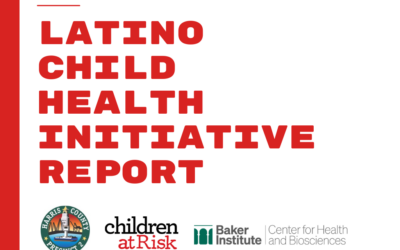
By Lauren Biegel
Discussions around human trafficking are often focused on identifying victims and punishing their traffickers. Unfortunately, removing a victim from the situation in which they are being exploited is far from the end of the road to recovery and healing. While recovering from victimization is inherently difficult enough, compounding factors often make it even more so.
Certain groups of people are more vulnerable to trafficking (ex. those experiencing poverty, homelessness, addiction, and/or involvement with foster care or juvenile justice). Furthermore, in the United States, the average sex trafficking victim is first exploited before they are 16. This means that once removed from a trafficking situation, survivors who experienced these hardships don’t have many resources to restabilize and often don’t have much job experience, especially if they were trafficked as a child. Returning to a life of poverty, homelessness, or addiction with the immense trauma of trafficking victimization often prevents true recovery and healing. Additionally, involvement in sex trafficking can come with a criminal record that makes it even more challenging for survivors to find their footing and remain safe. Failing to equip survivors with adequate opportunity and support can make them vulnerable to being exploited and victimized yet again.
So, what do we do?
At CHILDREN AT RISK, we see immense promise in programs focusing on economic empowerment for survivors of human trafficking and those at risk of exploitation. The Texas Attorney General identified economic empowerment as a key prevention tactic in their 2020 strategic plan to end human trafficking: “[e]conomic insecurity poses a significant vulnerability to human trafficking, and individuals may become entangled in either sex or labor trafficking out of economic necessity. Increasing economic opportunities for high-risk populations can help remove the financial strain that places many at risk for exploitation.”
Economic empowerment programs are used across the globe to support survivors of sexual and gender-based violence by organizations like the International Rescue Committee. Research has shown that economic empowerment programs significantly increase financial literacy, financial attitudes, economic self-efficacy, economic self-sufficiency, financial motivation, financial behaviors, and quality of life among survivors of interpersonal violence.
Futures without Violence, a global organization focused on fighting violence against women and girls across the world, identifies 3 types of economic empowerment programs: financial literacy, employment support services, and asset-building programs. In order to best support survivors of trafficking, we must understand the strategies and components necessary to make these programs successful.
Financial literacy should be culturally responsive, trauma-informed, and healing-centered. Programs have also seen success when partnered with a financial institution that can offer products and 1-on-1 services to survivors. For example, the Allstate Foundation has developed a financial literacy curriculum for survivors of domestic violence. Before getting into the actual financial training, the first module is designed to teach survivors how to identify and protect themselves from financial abuse. It also gives gentle suggestions for how victims can seek financial safety. The guide also gives tips and advice on topics like speaking with an attorney and handling the emotions that are often involved in managing money.
Employment support services should include career exploration and counseling, job or career readiness, job or vocational training, entrepreneurship or microenterprise development programs, and job placement and retention. It is important that career services focus on the individual survivor and allow them to chart their own path. Programs should encourage and support survivors working towards generally recognized certificates.
Additionally, programs should ensure access to wrap-around services like childcare during training. For example, here in Houston a local non-profit coffee shop, A 2nd Cup, runs a program to train survivors of human trafficking in culinary jobs. The program, Brazen Table, supports and trains survivors in getting their Food Handlers Certificate. While Brazen Table is focused on job training, participants receive case management services and training in broader areas like resume writing and interpersonal skills. The survivors also receive a $200 stipend a week to further support their recovery.
With financial education and career training, human trafficking survivors can begin the process of asset building. To assist them with that, programs can provide services like no-interest microloans and flexible funding. Asset-building programs can help survivors afford education and housing as well as pay off debts tied to their exploitation. Alliance for Hope international offers these types of asset-building programs to survivors of trafficking through Proyecto Esperanza. One of their no-interest loans went to a survivor who owned a floral and event planning business.
As they explain, “[a]n interest-free loan of $3,000 will enable Mariel to expand her floral design and event planning business so she can support herself and her children. Creating financial independence also helps relieve stress during the long process of emotional recovery from abuse and trauma.”
Too often, our support for survivors ends when they are out of their trafficking situation. However, in order to support survivors through the full, complicated path to healing, we must recognize their need for continued resources in rebuilding a life insulated from the forces that exploited them in the first place.
CHILDREN AT RISK is excited that Governor Abbott recently announced a 2-year pilot program, created by 3Strands Global Foundation, to connect young (16-25yo) victims of trafficking to employment support alongside local workforce boards. Per the announcement, “A Training and Employment Navigator will guide each individual through the workforce center services, such as career readiness and coaching, referrals, training and support services, and employment connections. The Navigator will serve as the single point of contact for the participant, providing specialized intake and assessment to identify programs and services of benefit. The Navigator will also coordinate with Texas employers who commit to hiring and supporting program participants.”
This pilot program and the many economic empowerment programs mentioned above are excellent first steps in supporting the whole needs of human trafficking survivors. By equipping survivors with the skills and services necessary to become economically independent, we ensure they are just surviving but thriving.
To learn more about the work CHILDREN AT RISK is doing to end human trafficking and support survivors, visit childrenatrisk.org/human-trafficking/
MORE LIKE THIS
2024 Annual Report
Dear Friends and Advocates, At CHILDREN AT RISK, we believe that every child deserves a fair shot at success—and we know that it takes all of us to make that happen. Whether you’re a policymaker, educator, donor, volunteer, or advocate, your partnership has helped...
Advocating in Support of SB 941/HB541
Caroline Roberts, JD, General Counsel & Senior Director of Public Policy with CHILDREN AT RISK, testifies in support of SB 941/ HB 451 during the March 25, 2025 Texas House Licensing & Administrative Procedures Committee Hearing. Texas can do more to protect...
2025 Anti-Human Trafficking Advocacy Day Recap
Anti-Human Trafficking Advocacy Day AUSTIN, TX (January 30, 2025) – Human trafficking continues to devastate vulnerable populations in Texas, with children in foster care and the juvenile justice system disproportionately at risk. In 2022, only 332 of the 38,294...
Fall 2024 | Early Childhood Education Texas Tour
CHILDREN AT RISK's Early Childhood Texas Tour is coming to a city near you, and you won’t want to miss it. C@R is hitting the road with 12 in-person stops across the state, bringing together child care providers, community leaders, and anyone passionate about...
2024 Latino Child Health Initiative Report
In Texas, almost half of the population of children under the age of 18 are Latino, yet there has not been a concerted effort to address the particular health issues facing this population. Latinos account for 48% of the population in Harris County Precinct 2 and are...



